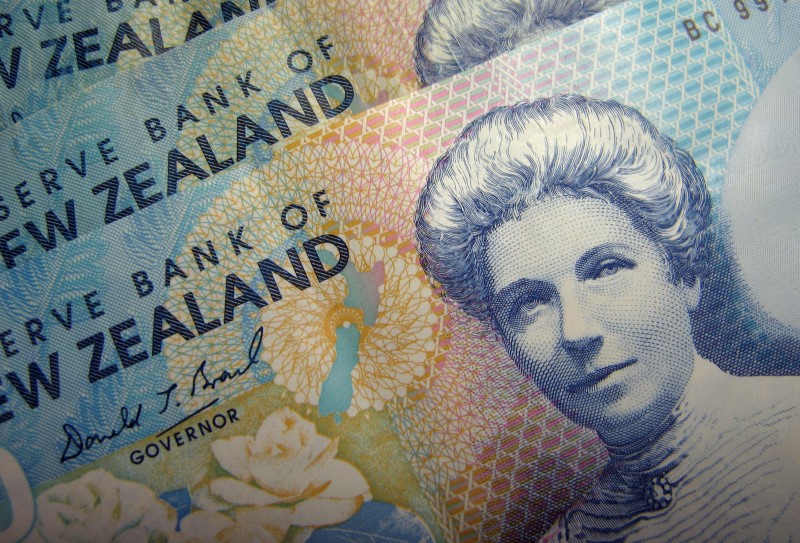By Wayne Cole
SYDNEY, Aug 10 (Reuters) - The New Zealand dollar sank to its lowest since early 2016 on Friday as investors weighed the risk of a cut in interest rates after a sharp dovish turn by the central bank.
The kiwi was nursing a grudge at $0.6609 NZD=D3 , having sunk 2 percent on Thursday in the biggest daily sell-off in three years.
The slide shattered major support around $0.6688 and threatened a huge Fibonacci level at $0.6595, marking a 61.8 percent retracement of its ascent from $0.6000 in 2015 to $0.7557 last year. A break there would open the way to a $0.6350 trough from January 2016.
The collapse came after policymakers at the Reserve Bank of New Zealand (RBNZ) warned of the dangers to economic growth and forced markets to seriously consider the chance the next move in rates might be down, not up. rate futures surged 0#NBB: and two-year bond yields NZ2YT-RR tumbled 13 basis points to an historic low at 1.69 percent, taking them below the 1.75 percent cash rate.
"Given the slowdown in economic activity and the ongoing global trade dispute, the RBNZ is sending a message that further easing may be possible in the months ahead," said Hussein Sayed, chief market strategist at broker FXTM.
"This is likely to keep the NZD under pressure and test new lows below $0.6500 by year-end."
In contrast the Reserve Bank of Australia (RBA) has been clear it is not contemplating further rate cuts and the next move is likely to be up, albeit not for a long while yet.
The central bank issued its latest set of forecasts on Friday and remained upbeat on activity, predicting annual economic growth of at least 3 percent out to 2020. a result, markets 0#YIB: are pricing no risk at all of an easing and around a 50-50 probability of a hike by late next year.
"Swap spreads now indicated a greater level of confidence that Australian interest rates will be higher than New Zealand interest rates over the next two years," said Richard Grace, chief currency strategist at CBA.
That was why the Aussie dollar had jumped to a nine-month peak on the kiwi at NZ1.1175 AUDNZD= , having surged 1.2 percent on Thursday to break major resistance at NZ$1.1000.
"Participants should prepare for a higher average NZ$1.1000-1.1200 trading range in the AUD/NZD exchange rate, which risks being in place for at least the remainder of the year," said Grace.
The Aussie had less luck against the U.S. dollar, falling back to $0.7370 AUD=D3 from a top around $0.7450 on Thursday.
Simmering tensions around global trade and steep sell-offs in several emerging market currencies - notably the Russian rouble and Turkish lira - lifted the U.S. dollar broadly.
Australian government bond futures added to their gains, with the three-year bond contract YTTc1 up 1.5 ticks at 97.930. The 10-year contract YTCc1 rose 3 ticks to 97.3750. (Editing by Kim Coghill)
